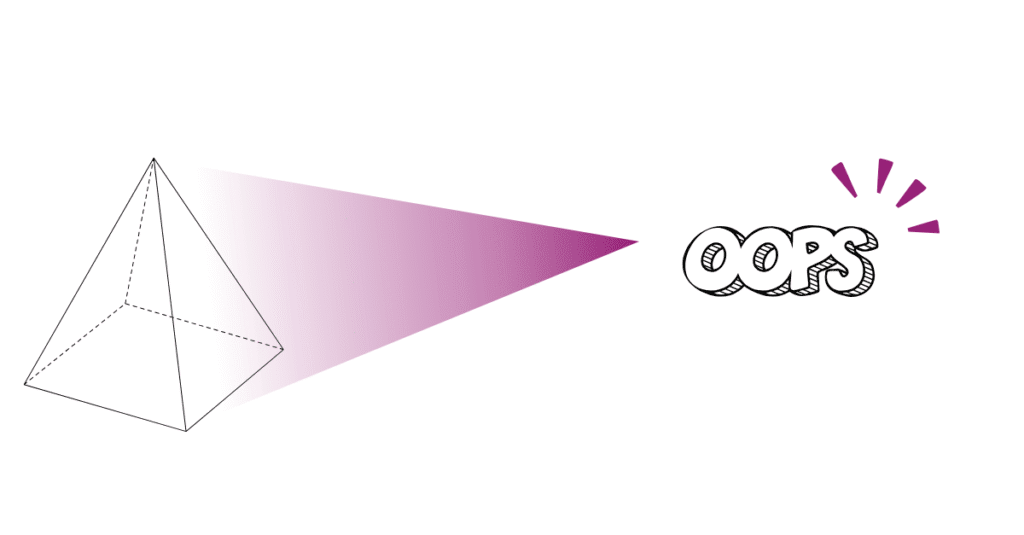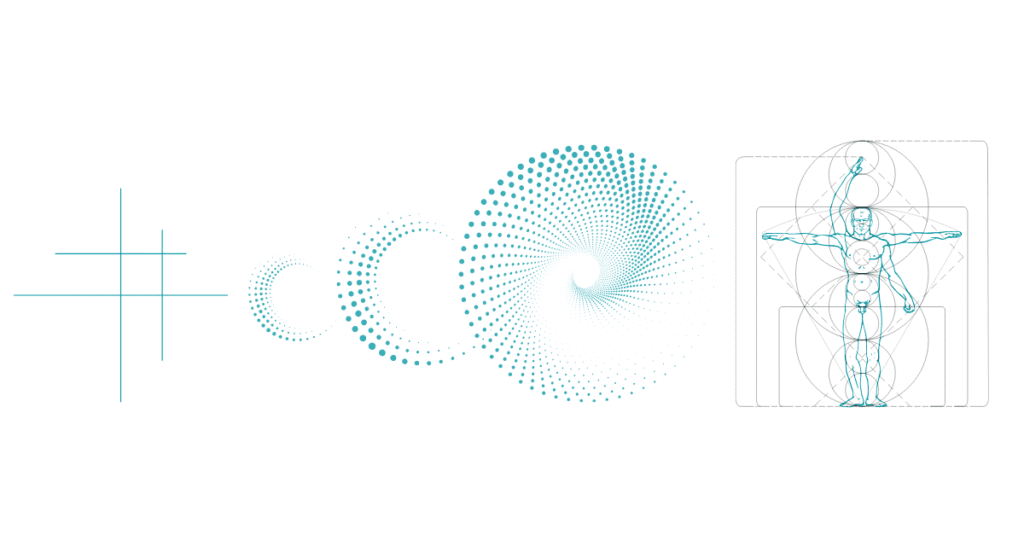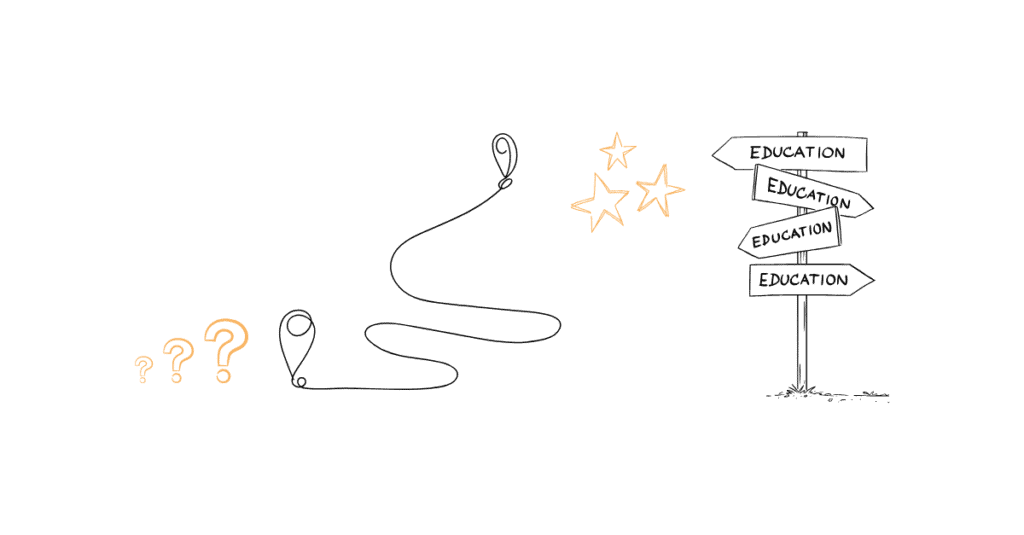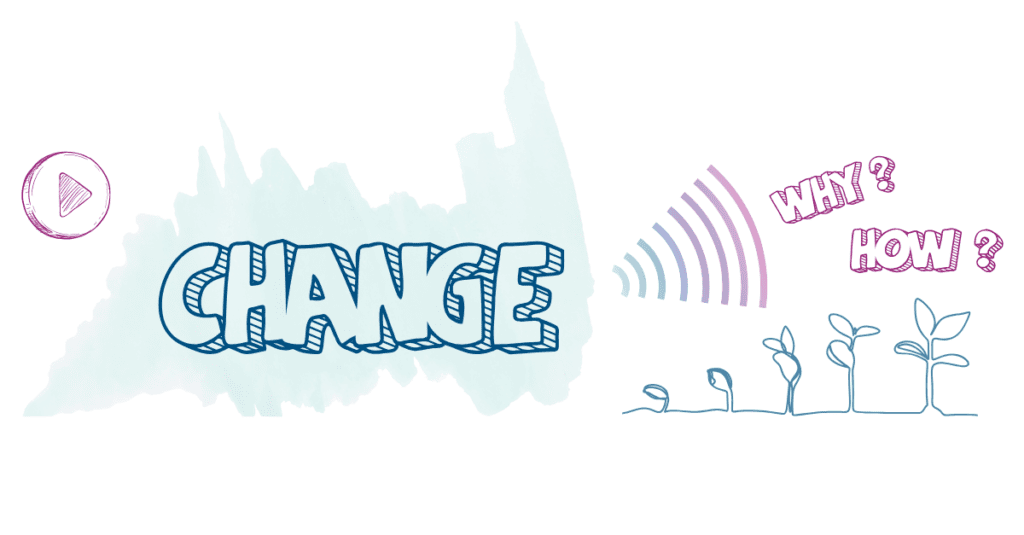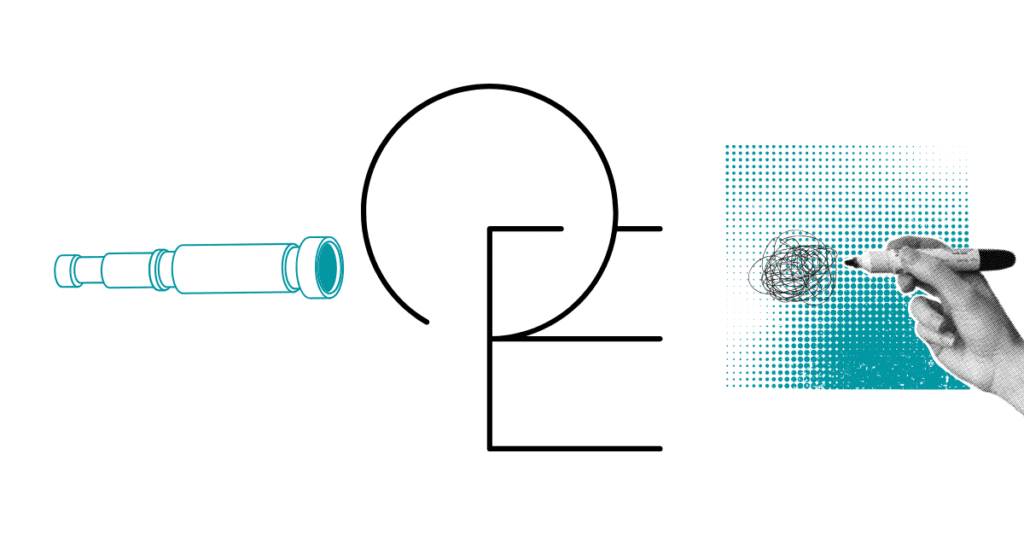What is the Goal of TRIZ?
“TRIZ” – a Russian acronym that translates into The Theory of Inventive Problem Solving – is a Liberating Structure that helps you and your team identify counterproductive activities and generate creative solutions for dealing with complex business challenges.
By working with the TRIZ Template, you can help your team to challenge their unconscious beliefs, unquestioned assumptions, and habitual ways of doing things which can significantly limit their ability to innovate.
TRIZ invites us to think about the question: “What do we have to do to reliably (insert your most undesirable outcome in a given situation here)?”.
Example:
“What do we have to do to definitely kill our company?”
This often induces seriously fun yet very courageous conversations that require skilful facilitation. By tapping into a sense of irony, we can approach challenging topics that often remain taboo in a fun and creative way that allows for new opportunities and courses of action.
When can you use the TRIZ Method?
✅ To create space for innovation through creative destruction of limiting beliefs, assumptions, and behaviours through the power of “serious play”
✅ To map out a desirable future or vision and get clear on the first actions steps that need to be taken to realise it
✅ To build inspiration and trust and removing mental and interpersonal barriers
Who should participate in TRIZ?
Allow small teams of 4-7 people to work together on one TRIZ Template.
Note: Depending on the size of the entire group (all teams), it will take more / less time to share and combine all the findings the small teams have produced.
Prepare your TRIZ Session:
Prepare one flip chart / one section on a digital whiteboard in which you draw / paste the TRIZ Framework for each small team to work on. In an in-person setting, ensure that each team has enough post-it notes and pens to capture their ideas.
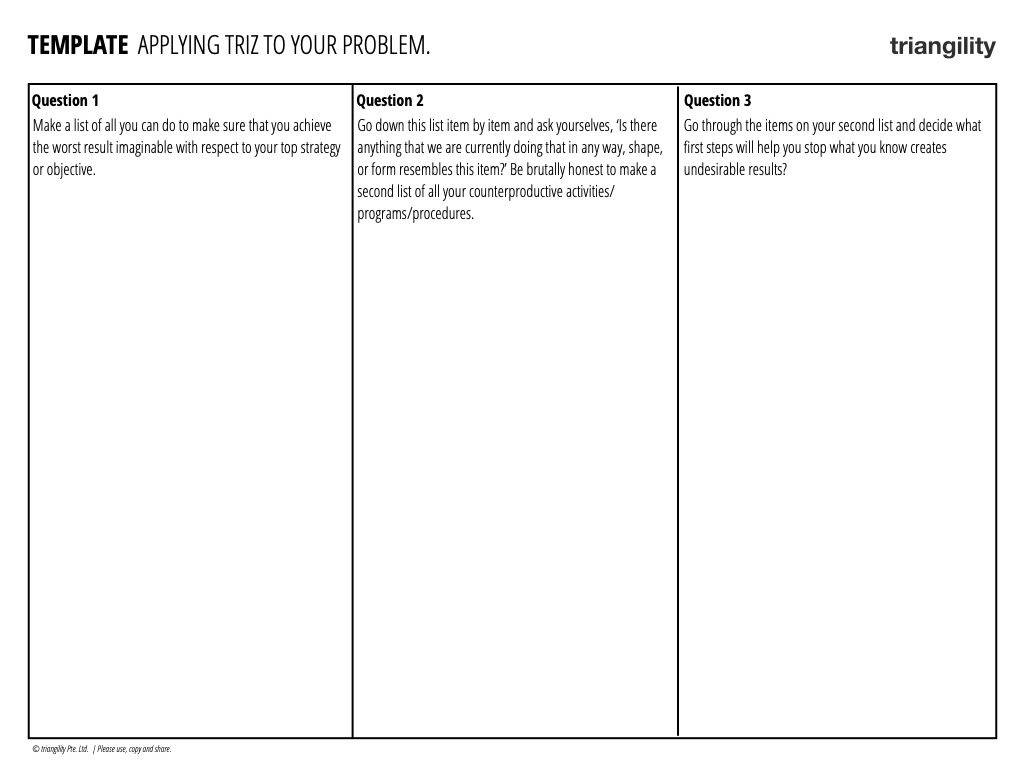
How to facilitate a TRIZ Session:
Introduce the idea of TRIZ to the group and identify an unwanted result. Let the group decide whether they want to work on the same unwanted result to compare their findings (deep problem analysis), or whether each small team will work on different unwanted results (broad problem analysis).
Now, invite them to go into their small teams and take 10 min to brainstorm ideas for each of the three segments.
To guide their 3-step idea generation process, the teams can use the following action prompts:
➡️ Make a list of all you can do to make sure that you achieve the worst result imaginable with respect to your top strategy or objective.
➡️ Go down this list item by item and ask yourselves, ‘Is there anything that we are currently doing that in any way, shape, or form resembles this item?’ Be brutally honest to make a second list of all your counterproductive activities/programs/procedures
➡️ Go through the items on your second list and decide what first steps will help you stop what you know creates undesirable results? (Important: Don’t accept ideas for doing something new or additional – be sure all suggestions are about how to stop certain activities or behaviours, not about starting new things)
After the Session: reflect your work with TRIZ
❓How difficult was it to focus only on finding out which activities to stop, instead of thinking about which new things to start?
❓If the teams explored different unwanted outcomes: What action steps has each team come up with? Are there any additional ideas from the rest of the group?
❓If all teams explored the same unwanted outcome: Are there similar ideas in terms of what to do now (see column 3 in the TRIZ template)? If so, how can they be clustered and prioritised?
❓How can it be measured that the destructive behaviour has been stoped?
❓Who of the group will be involved in stopping the counterproductive activities? Who else needs to be included?
❓Can we come up with individual as well as group agreements around the activities that will be stopped, starting with “I will stop….” and “We will stop…”?
❓What are you taking away from this exercise for your everyday work life?
Material:
(Virtual) Whiteboard or Flipchart
Sticky Notes in different colours
Pens / Markers
Time:
30-45 minutes
If you want to practice creative problem solving with TRIZ, please download the TRIZ Template with additional description for free:


